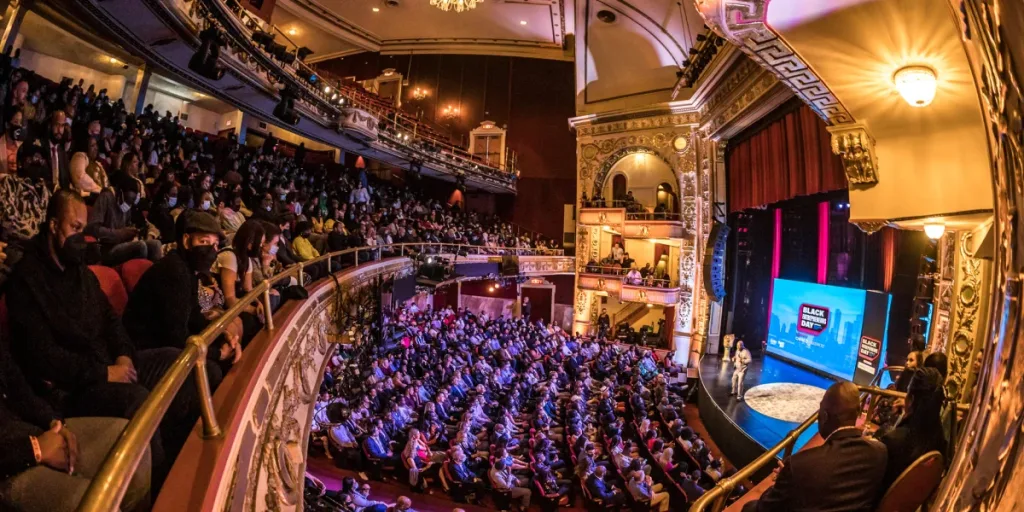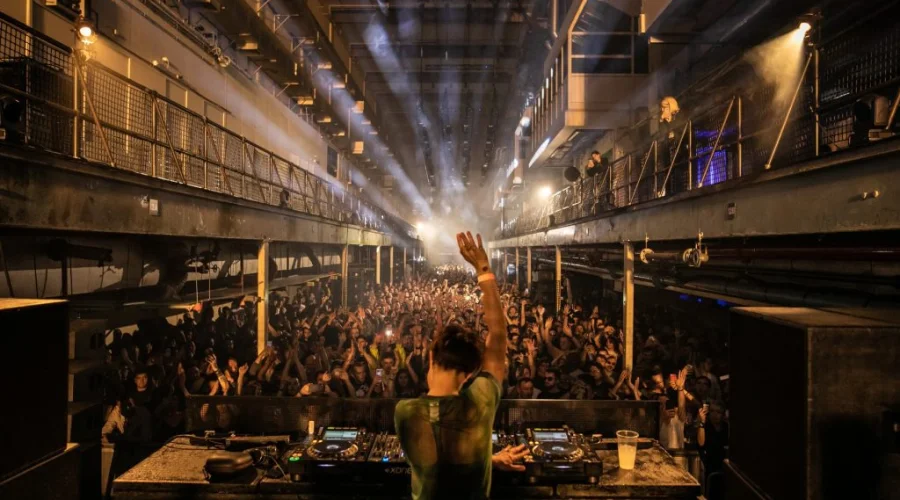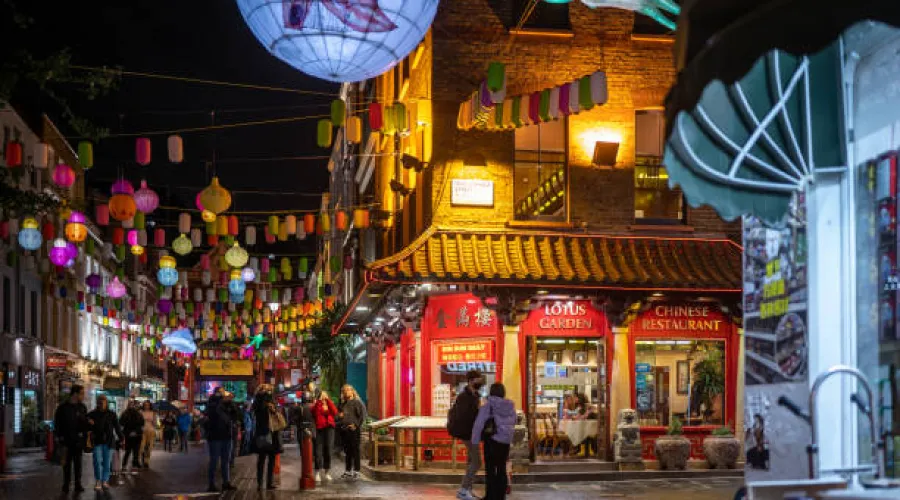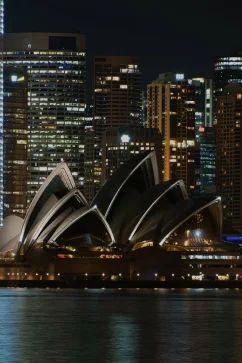Night Life in London: A Diverse Tapestry of Entertainment

London, the vibrant and culturally rich capital of the United Kingdom, transforms into a pulsating hub of nightlife after the sun sets. From its legendary theaters and West End productions to its bustling pubs and energetic clubs, London offers a diverse tapestry of entertainment options for night owls and revelers. This report delves into the multifaceted world of night life in London, exploring the array of experiences it offers and its significance in the city’s culture.
The West End and Theatre Productions
London’s West End is a theatrical paradise that beckons both locals and tourists. The district is renowned for its plethora of theaters showcasing an array of world-class productions, including musicals, dramas, comedies, and timeless classics. From the iconic “Les Misérables” and “The Phantom of the Opera” to contemporary hits like “Harry Potter and the Cursed Child,” the West End caters to diverse tastes. It’s an opportunity to witness exceptional acting, stellar set designs, and unforgettable performances under the dazzling lights.
Historical Origins
The origins of London’s West End as a theatrical hub can be traced back to the 17th century when the first English public playhouse, the Theatre Royal, was established. In the following centuries, this district, stretching from Covent Garden to Leicester Square, evolved into the epicenter of London’s theatrical activity.
The Collection of Theatres
The West End houses an impressive collection of world-class theaters, each with its own unique character and history. Some of the most iconic venues include:
- Theatre Royal Drury Lane: Dating back to 1663, this theatre is one of London’s oldest and most prestigious, hosting legendary shows like “Miss Saigon” and “42nd Street.”
- The Royal Opera House: Renowned for its opera and ballet productions, this historic venue offers an opulent setting for cultural performances.
- The London Palladium: Known for its variety shows and musicals, it has seen famous acts, including Judy Garland and The Beatles.
- The Lyceum Theatre: Home to “The Lion King” musical, it combines stunning architecture with unforgettable performances.
- The Dominion Theatre: Known for hosting blockbuster musicals such as “We Will Rock You” and “War of the Worlds.”
- The Apollo Theatre: Famous for staging contemporary and classic plays.
Theatre Productions
The West End offers a diverse range of theatrical productions, catering to an array of tastes. Some of the most celebrated genres and shows include:
- Musicals: The West End is synonymous with musical theatre. Productions like “The Phantom of the Opera,” “Les Misérables,” and “The Book of Mormon” have captivated audiences for years.
- Dramas: Classic plays, contemporary dramas, and Shakespearean performances are a staple of the West End’s theatrical offerings.
- Comedies: The district hosts a range of comedic plays and stand-up comedy shows, providing laughter and entertainment.
- Children’s Theatre: Family-friendly shows, including adaptations of beloved children’s books, make the West End an attractive destination for young theatergoers.
Significance
The West End’s significance transcends its entertainment value. It plays a pivotal role in preserving and promoting the arts, culture, and history of London. The district is not just a source of world-class entertainment but also an educational resource, offering insights into British culture and storytelling. The West End is a driving force behind London’s tourism and economy, attracting theater enthusiasts from around the world and contributing significantly to the city’s cultural identity.
The West End and its theatrical productions are a testament to the enduring power of storytelling, the arts, and cultural expression. A visit to the West End is more than just a night at the theater; it’s a journey through the world of creativity, emotion, and human connection. The district encapsulates the essence of artistic expression and serves as a tribute to the beauty, diversity, and richness of the performing arts. A night at a West End theatre is a pilgrimage for theater lovers, an immersion in the timeless beauty of the stage, and an opportunity to embark on a lifelong journey of enlightenment and artistic appreciation.
Pubs and Traditional London Nights
Pubs are an integral part of British culture, and London boasts an abundance of them. Traditional London nights often involve a visit to a local pub, where you can savor a pint of ale, indulge in hearty British fare, and engage in conversations with locals. Pubs such as The Lamb and Flag, The Ten Bells, and The Spaniards Inn hold historical significance and offer a glimpse into London’s past. Pub quizzes, live music, and cozy settings make them an attractive option for a laid-back night out.
Historical Origins
Pubs have a storied history in London, dating back centuries. The term “pub” is a colloquial abbreviation of “public house,” which traditionally served as a community gathering place. The concept of the pub can be traced back to Roman taverns and medieval alehouses.
The Collection of Pubs
London boasts an abundance of traditional pubs, each with its own character, history, and charm. From the cozy corners of old-fashioned establishments to the bustling atmosphere of city center pubs, these venues offer unique experiences. Some of the most iconic pubs include:
- The Lamb and Flag: A historic Covent Garden pub that dates back to the 18th century, known for its literary connections with Charles Dickens.
- The Spaniards Inn: Located on the edge of Hampstead Heath, it has been in operation since the 16th century and has a rich history of famous patrons, including John Keats and Lord Byron.
- The Ten Bells: A historic East End pub associated with the Jack the Ripper case and Victorian London.
- The Mayflower: Situated along the River Thames, it is reputed to be London’s oldest pub and offers scenic views of the river and the city.
- The George Inn: Southwark’s George Inn is London’s last surviving galleried coaching inn, evoking the atmosphere of old London.
Traditional London Nights
Traditional London nights often revolve around a visit to a local pub. These nights are characterized by:
- Pints and Ales: Traditional London nights are synonymous with enjoying a pint of ale or beer. Pubs often have a wide selection of local and international brews.
- Hearty Fare: Pubs serve classic British dishes, offering comfort food like fish and chips, pies, and hearty roasts. These meals are often enjoyed in the pub’s cozy dining areas.
- Live Music: Some traditional pubs feature live music, including folk sessions and acoustic performances, creating a lively atmosphere.
- Pub Quizzes: Many London pubs host pub quizzes, where locals and visitors can test their knowledge and compete for prizes.
- Local Company: A hallmark of traditional London nights is the opportunity to engage in conversations with locals and fellow patrons, fostering a sense of community and camaraderie.
Significance
Pubs hold immense cultural significance in London and the United Kingdom as a whole. They are places where generations have gathered, and the city’s rich history and traditions come to life. Pubs are a source of comfort, relaxation, and social interaction. They are a testament to the enduring spirit of togetherness, storytelling, and hospitality.
Pubs and traditional London nights are not just about enjoying a drink; they are about celebrating the timeless traditions of British culture. A visit to a London pub is more than a night out; it’s an immersion into the history, camaraderie, and cherished traditions of London’s residents and visitors. Pubs encapsulate the essence of British culture and serve as a tribute to the beauty, diversity, and richness of human connection and shared experiences. A night at a London pub is a pilgrimage for those seeking the true spirit of London, an immersion in the timeless charm of British tradition, and an opportunity to embark on a lifelong journey of camaraderie and history.

Music Scene and Live Gigs
London’s music scene is eclectic and lively, offering live gigs across various genres. From legendary venues like the Royal Albert Hall, the O2 Arena, and the Roundhouse to intimate spaces such as The Jazz Cafe and Ronnie Scott’s Jazz Club, music enthusiasts can find their rhythm in the city. Whether it’s rock, pop, jazz, or electronic beats, London’s live music venues cater to diverse musical palates.
Historical Origins
London’s musical heritage runs deep, with roots that stretch back through centuries of musical evolution. It has been a breeding ground for countless legendary artists, from classical composers to iconic rock bands. The city’s connection to music can be traced to the flourishing classical music scene in the 17th and 18th centuries, while the 20th century saw the birth of rock ‘n’ roll and the British invasion.
The Collection of Venues
London’s music scene is celebrated for its plethora of venues, each with its own unique character and history. Some of the most iconic venues include:
- The Royal Albert Hall: A prestigious and world-renowned concert hall known for its acoustics and classical music performances.
- The O2 Arena: A modern, multipurpose venue that hosts international superstars and major events.
- The Roundhouse: A historic venue that has hosted iconic artists like Jimi Hendrix and The Doors, as well as contemporary acts.
- The Jazz Cafe: A legendary intimate space for jazz, soul, and world music performances.
- Ronnie Scott’s Jazz Club: A celebrated jazz club known for hosting legendary artists and fostering emerging talent.
Variety of Performances
London’s music scene encompasses a wide range of musical genres and live gigs, including:
- Rock and Pop: Venues like the O2 Arena, Wembley Stadium, and the SSE Arena, Wembley, host major rock and pop acts, from The Rolling Stones to Adele.
- Classical Music: The city boasts a variety of orchestras, including the London Symphony Orchestra, and hosts classical concerts at renowned venues like the Royal Festival Hall.
- Indie and Alternative: Smaller venues like The 100 Club and The Borderline offer platforms for indie and alternative bands to showcase their talent.
- Electronic Music: London’s club scene, including Fabric, Ministry of Sound, and Printworks, is a hub for electronic dance music (EDM) and techno.
- World Music: Venues like Rich Mix and the Barbican Centre showcase world music and multicultural performances.
Significance
London’s music scene is not only a testament to the city’s artistic vitality but also a source of cultural and economic significance. It contributes to the city’s cultural identity, attracts music enthusiasts from around the world, and plays a vital role in the music industry. The music scene is a reflection of London’s diversity and cultural inclusivity. It offers a platform for both established artists and emerging talents to share their music and stories, contributing to the city’s global reputation as a musical melting pot.
London’s music scene and live gigs are a testament to the power of music as a universal language and a medium for artistic expression. A night out to enjoy live music in London is more than just a concert; it’s an immersion into the history, passion, and creativity of musicians. The city’s music scene encapsulates the essence of artistic freedom and serves as a tribute to the beauty, diversity, and richness of human expression. A night at a London gig is a pilgrimage for music enthusiasts, an immersion in the timeless melodies of the city, and an opportunity to embark on a lifelong journey of musical appreciation and discovery.

Clubs and Electronic Dance Music (EDM)
London’s club scene and Electronic Dance Music (EDM) culture have earned international acclaim, making the city a global hub for electronic music enthusiasts. From iconic nightclubs to cutting-edge DJ sets, London’s nightlife offerings are a testament to its vibrant and dynamic electronic music culture. This report delves into the history, significance, and the captivating world of London’s clubs and EDM nights.
Historical Origins
The origins of London’s club culture can be traced back to the late 20th century, with a particular focus on the late ’80s and early ’90s. This era saw the emergence of the acid house and rave culture, which played a pivotal role in shaping the city’s modern club scene. Notable venues like Ministry of Sound and The Haçienda made their mark during this period, setting the stage for London’s contemporary club culture.
The Collection of Clubs
London’s club scene is celebrated for its diverse range of venues, each offering a unique experience. Some of the most iconic and influential clubs include:
- Ministry of Sound: Established in 1991, it is one of the world’s most famous electronic dance music clubs and a pioneer in London’s club scene.
- Fabric: Known for its cutting-edge sound system, Fabric is a renowned venue for electronic music enthusiasts, featuring a mix of house, techno, and drum and bass.
- Printworks: Housed in a former printing factory, Printworks is known for hosting immersive electronic music events and has become an iconic venue.
- Egg London: Located in a converted warehouse, Egg London offers an eclectic mix of house, techno, and trance music.
- Corsica Studios: A favorite among underground electronic music lovers, Corsica Studios is known for hosting avant-garde and experimental acts.
Electronic Dance Music (EDM) Culture
London’s EDM culture is a vibrant fusion of music, art, and expression. It encompasses various subgenres, including house, techno, drum and bass, and trance, catering to diverse tastes and preferences. EDM events often feature world-renowned DJs and producers, creating a euphoric atmosphere on the dance floor.
Significance
London’s club scene and EDM culture hold significant cultural and economic importance. They contribute to the city’s cultural identity and attract music enthusiasts from around the world. The clubs serve as platforms for both established and emerging DJs and producers, fostering creativity and innovation in electronic music. The city’s club scene also plays a vital role in the global music industry, making London a cornerstone for electronic music events, festivals, and record labels. It offers a vibrant platform for artistic expression and a celebration of freedom, unity, and the power of music.
London’s clubs and EDM nights are not just venues for music; they are vibrant landscapes of rhythm and unity, celebrating the transcendental power of electronic dance music. A night out in one of London’s iconic clubs is more than just a party; it’s an immersion into the history, culture, and pulse of the city. The club scene encapsulates the essence of artistic freedom and serves as a tribute to the beauty, diversity, and richness of human expression through music. A night at a London club is a pilgrimage for electronic music enthusiasts, an immersion in the electrifying sounds of the city, and an opportunity to embark on a lifelong journey of musical appreciation and rhythmic discovery.

Late-Night Eateries and Street Food
London’s culinary landscape doesn’t slumber either. Late-night eateries and street food vendors dot the city, ensuring that you’re never far from a delicious post-midnight snack. Areas like Brick Lane, Borough Market, and Southbank Centre Food Market come to life at night, offering a delectable array of international flavors and gastronomic experiences.
Historical Origins
Late-night eateries and street food vendors have been part of London’s culinary landscape for centuries. The concept of street food can be traced back to medieval markets and the thriving food culture of immigrant communities. Over time, these street food stalls have evolved, offering a rich tapestry of international cuisines.
The Collection of Eateries and Vendors
London’s late-night dining scene is celebrated for its diversity and inclusivity. Some of the most iconic late-night eateries and street food vendors include:
- Brick Lane: This East London area is famous for its vibrant street food scene, featuring dishes from around the world, including Bangladeshi curries, salt beef bagels, and Ethiopian cuisine.
- Borough Market: One of London’s oldest food markets, Borough Market comes alive at night, offering gourmet street food, artisanal cheeses, and delectable pastries.
- Southbank Centre Food Market: Located along the Thames, this market hosts an array of international street food vendors, including Thai, Mexican, and Caribbean cuisine.
- Chinatown: London’s Chinatown boasts a variety of late-night eateries serving Chinese, Japanese, and Korean dishes, offering a taste of Asian cuisine.
- Food Trucks: The city is dotted with food trucks offering a range of options, from gourmet burgers to gourmet vegan treats.
- Traditional Pie and Mash Shops: For a taste of classic British comfort food, late-night pie and mash shops serve up delicious, hearty dishes.
Variety of Flavors
Late-night eateries and street food vendors offer a diverse range of flavors, from savory to sweet, including:
- International Cuisine: London’s diverse population is reflected in the international flavors available, from Indian and Mexican to Thai and Ethiopian.
- Gourmet Burgers: London is home to a burgeoning gourmet burger scene, with unique and inventive offerings.
- Vegan and Vegetarian: Plant-based options are abundant, with vegan and vegetarian street food catering to a growing dietary trend.
- Desserts and Sweets: Late-night vendors serve delectable desserts and sweets, from churros to artisan ice creams.
Significance
Late-night eateries and street food are more than just convenient dining options; they are a celebration of London’s cultural diversity, a reflection of its culinary innovation, and a testament to its inclusive spirit. These late-night venues foster a sense of community, bringing people together from different backgrounds to enjoy a common passion for food. London’s street food culture also supports local businesses, provides opportunities for entrepreneurs, and contributes to the city’s economy. It’s an integral part of the city’s identity and cultural fabric.
Late-night eateries and street food in London are not just places to eat; they are vibrant canvases of taste, tradition, and culinary innovation. A visit to one of these venues is more than just a meal; it’s an exploration of the diverse flavors, cultures, and stories that make London a culinary melting pot. The late-night dining scene encapsulates the essence of shared experiences and serves as a tribute to the beauty, diversity, and richness of human expression through food. A late-night food adventure in London is a pilgrimage for food enthusiasts, an immersion in the global flavors of the city, and an opportunity to embark on a lifelong journey of culinary appreciation and gastronomic discovery.
Significance in London’s Culture
Nightlife in London is more than just entertainment; it’s a reflection of the city’s dynamic and diverse culture. The West End’s theaters are a testament to London’s contributions to the arts and its love for storytelling. Traditional pubs encapsulate the city’s rich history and enduring spirit of camaraderie. The music scene is a tribute to London’s role in shaping global music trends, and the club culture is a celebration of freedom and expression. Moreover, London’s nightlife contributes significantly to the city’s economy and tourism industry. It attracts visitors from around the world who come to experience the city’s unique blend of entertainment.

Conclusion
London’s nightlife is a vibrant and multifaceted world that never sleeps. It offers an array of experiences, from the enchanting world of theater to the lively beats of clubs, and from traditional pub nights to the culinary delights of late-night street food. Nightlife is an integral part of London’s culture, contributing to its global allure and offering unforgettable experiences for those who embrace the city’s after-hours spirit. London truly comes alive at night, inviting everyone to become a part of its energetic and diverse tapestry of entertainment.









